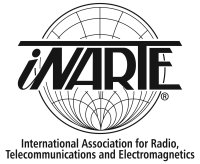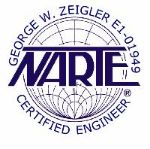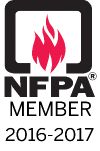Voltage Surge Thresholds for Equipment
The Information Technology Industry Council (ITI) provides a guideline called the "ITI Power Curve." This curve illustrates the maximum voltage that equipment can handle without suffering damage or experiencing operational issues. In simple terms, it not only identifies the voltage levels that can harm the equipment or corrupt its data but also specifies the duration for which this voltage must be present to cause such effects.
The ITI Power Curve shows that a voltage surge of as little as 120% above the RMS or peak voltage, lasting between 0.003 milliseconds and 0.5 seconds, can cause damage. Furthermore, a voltage surge of 110% above the RMS or peak voltage that lasts longer than 0.5 seconds is also likely to result in equipment damage.
SPGS recommends buying surge protective devices that absorb surges quickly and provide the lowest Voltage Protection Rating (VPR) to the equipment.
|
Short Surge Duration Time and PEAK Voltages That Will Result in Equipment Damage 1 microsecond (µs) = 0.000001 (millionth of a second) 1 millisecond (ms) = 0.001 (thousandth of a second) 1 nanosecond (ns) = 0.000000001(billionth of a second) |
|||
|
Line Voltage (RMS/Peak) |
500% Overvoltage |
300% Overvoltage |
200%Overvoltage |
|
8 to 20 μs |
Up to 100 μs |
More than 100 μs |
|
|
480 RMS/679 Peak |
2,400/3,395 Volts |
1,440/2,037 Volts |
960/1,358 Volts |
|
277 RMS/392 Peak |
1,385/1,960 Volts |
831/1,176 Volts |
554/784 Volts |
|
240 Volts/339 Peak |
1,200/1,695 Volts |
720/1,117 Volts |
480/678 Volts |
|
120 Volts/170 Peak |
600/850 Volts |
360/510 Volts |
240/340 Volts |
|
Long Surge Duration Time and PEAK Voltages That Will Result in Equipment Damage 1 microsecond (µs) = 0.000001 (millionth of a second) 1 millisecond (ms) = 0.001 (thousandth of a second) 1 nanosecond (ns) = 0.000000001(billionth of a second) |
||
|
Line Voltage (RMS/Peak) |
0.003 to 0.5 Seconds |
Over 0.5 Seconds |
|
120% Overvoltage |
110% Overvoltage |
|
|
480 RMS/678 Peak |
576/814 Volts |
528/746 Volts |
|
277 RMS/392 Peak |
332/470 Volts |
305/431 Volts |
|
240 Volts/339 Peak |
288/407 Volts |
264/373 Volts |
|
120 Volts/170 Peak |
144/204 Volts |
132/187 Volts |
Equipment damage are classified into the following categories:
- No observed change (unforeseen consequence): The lack of visible change in the equipment specimen suggests that it is immune to the specified surge level. However, appearances can be misleading. The equipment may continue to operate normally within established limits, thereby meeting the criterion of "no loss of function or performance." Nonetheless, significant problems can still arise, including a gradual degradation of performance that remains within limits, potential latent failures in components, or unexpected consequences in other areas of the equipment environment.
- Upset (susceptibility: This consequence can be a self-recoverable issue, designed within the software, and may not be immediately noticeable. Alternatively, it might be a permanent problem requiring operator intervention or programmed automatic action after a delay. Many documents on testing methods classify these consequences into three categories:
- Minor: Acceptable temporary loss of function without any faulty operation.
- Major: Temporary faulty operation or performance that is self-recoverable.
- Critical: Faulty operation or performance that requires operator intervention or a system reset. Additionally, this category may include upsets caused by spark-over of air clearances that do not cause permanent damage to adjacent solid insulation.
- Damage (vulnerability) The consequences of this issue can be both subtle and obvious. As mentioned in category 1, damage may occur without detection unless a thorough assessment of the equipment condition is conducted. One of the most frustrating challenges in insulation testing is the risk of causing an incipient defect when performing a surge test.
- Consequential damage: This situation presents the risk that equipment exposed to a surge could cause damage to the surrounding area, potentially exceeding the significance of the damage done to the equipment itself. This could lead to the ignition of a fire or an explosion. Additionally, damage may occur due to hidden hardware issues, which can result in data corruption and may gradually affect other components in the database, leaving the user unaware of the problem.





